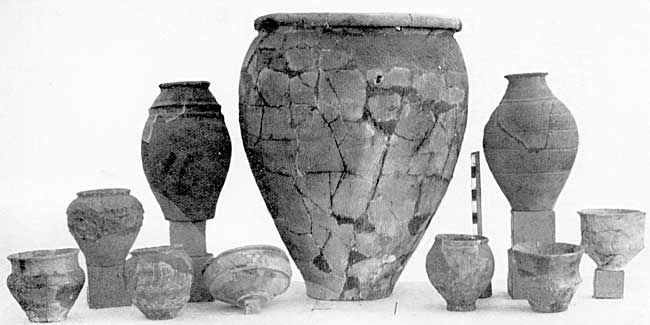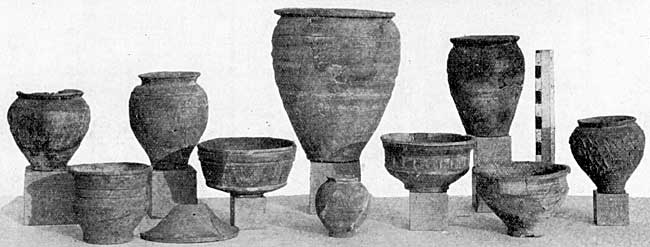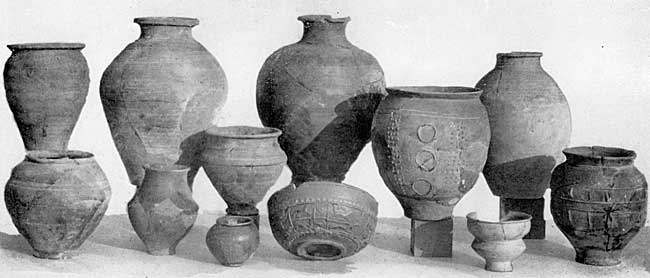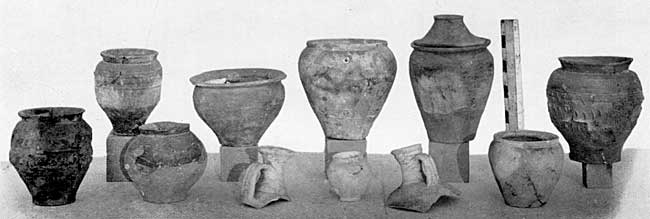The pottery from the lowest layers exhibits many late-Celtic features and is associated with carinated, Rustic and rouletted urns, tall urns with cordons and the large store-jars with comb-markings (Plate XIV.). Early pottery of this type, viz., not later than the reign of Nero, occurs in a series of rectangular pits (just behind the southern rampart) in which iron was smelted in the same primitive manner as in Africa at the present day, and lumps of iron slag containing as much as 40% of iron still occur in situ on the clay floors of these pits which are baked red by heat. The iron ore would have been brought from the Belvoir ridge and a flux was provided by Lias limestone from Cropwell Bishop, a few miles to the south on the Fosse Way, and as a consequence the characteristic Lias fossil Gryphaea incurva is often found in the early Roman occupation layers.

PLATE XIV. Pottery from the lowest layers (of Claudius-Nero date).
In a ditch just south of the main road (Via principalis) a great amount of pottery was found, and perhaps it was the ditch of a cook-house, for cooking-pots predominated, viz., the fluted cooking-pots characteristic of the reign of Nero (Plates XV., XVI., and XVII.) Old flagons, Rustic and rouletted urns occur in the lower part of the ditch; Belgic imitations of "Samian" bowls and a complete hemispherical bowl (Form 37) in the style of the Domitian potter MERCATOR occurred in the upper part.

PLATE XV. Pottery of ditch, south of the main road.

PLATE XVI. Pottery of ditch, south of the main road.

PLATE XVII. Pottery of ditch, south of the main road.
